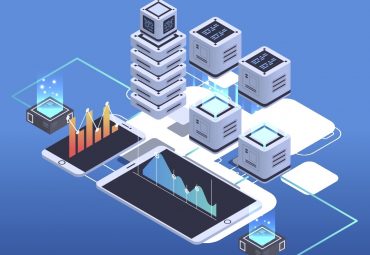
Continuous intelligence applications need a flexible infrastructure that accommodates the dynamic and variable nature of streaming data.
Continuous intelligence applications perform real-time analysis on streaming data. They need an infrastructure that can easily scale compute capacity up and down, accommodate additional data sources as they emerge, and quickly incorporate new analytics methods and algorithms. Applications also must be able to run on any platform including on-premises or using a public or private cloud.
Some examples illustrate the demands and needs of CI applications.
- A brokerage firm’s app that suggests new products or services in real time while customers check their accounts online might need to be enhanced with access not only to a customer’s credit history, but also with that customer’s transactions involving another financial service firm.
- A manufacturer’s preventive maintenance app that uses IoT data from systems along a factory floor might try to spot issues contributing to downtime by adding real-time video or acoustic analysis of critical equipment.
- A retail application that uses existing on-premises systems most of the year might need to be moved to a public cloud service during peak seasonal times to make use of the cloud service’s extra compute capacity.
Moving workloads or adding such capabilities to monolithic applications designed in the past would be a major undertaking.
Benefits of a Cloud Infrastructure for CI
CI applications need a flexible infrastructure that accommodates the dynamic and variable nature of streaming data. Adding new data sources should not require a massive reworking of a production application. And organizations should not have to spend vast amounts of capital to ensure they have compute capacity to handle peak loads.
The way to address these issues is to develop CI applications using a modern cloud-native architecture. A suitably selected architecture would:
- Support different deployment options (on-premises, cloud, and edge): For example, an IoT application might train a machine learning model using public cloud services, deploy that model to the edge device for real-time analysis of data as it is generated to take immediate actions, and look for trends and root causes of problems by analyzing historical data with on-premises systems.
- Allow workloads to easily move around to match requirements: For example, a business might want to use public cloud compute services to develop and test an AI-based analysis application, but then run the application on-premises to meet regulatory requirements for data privacy and protection.
- Speed the time to insights: For example, a CI object recognition application that performs image analysis might shorten the time from data ingestion to object identification by moving the application from a general-purpose compute system to one with highly optimized GPUs for faster image analysis.
A cloud-native architecture based on microservices lets businesses deliver these capabilities. Such an architecture lets businesses develop, deploy, move, and scale CI workloads to match the application’s requirements.
Microservices-based, cloud-native architectures also let businesses modify part of an existing app (e.g., switch from one analytics technique to another or make use of a new data source) without having to modify other parts of the app. Additionally businesses can move particular parts of an app, such as the ingestion and streaming analytics engine, from on-premises to the cloud or vice versa, depending on performance needs, costs, and the efficient use of resources.
Leveraging a Cloud-Native Technology Partner
IBM has been a leader in helping organizations turn streaming data into real-time insights. IBM addresses streaming data ingestion and analysis issues with IBM Cloud Pak for Data.
IBM Cloud Pak for Data is a fully integrated data and AI platform that helps businesses collect, organize, and analyze data and infuse AI throughout their organizations. Built on Red Hat OpenShift, IBM Cloud Pak for Data integrates IBM Watson AI technology with IBM Hybrid Data Management Platform, DataOps, data governance, streaming analytics, and business analytics technologies. Together, these capabilities provide the architecture for CI that can meet ever-changing business needs.
IBM Cloud Pak for Data is easily extendable using a growing array of IBM and third-party services. It runs across any cloud, allowing businesses to integrate their analytics and applications to speed innovation.
Complementing IBM Cloud Pak for Data, IBM Cloud Pak for Data System is a cloud-native data and AI platform in a box that provides a pre-configured, governed, and secure environment to collect, organize, and analyze data. Built on the same Red Hat OpenShift Container Platform, IBM Cloud Pak for Data System gives businesses access to a broad set of data and AI services and allows quick integration of these capabilities into applications to accelerate innovation. The hyperconverged, plug-and-play system is easily deployable in as little as four hours.
To learn more about how a cloud-native architecture can help with your CI efforts, visit Cloud Pak for Data.







